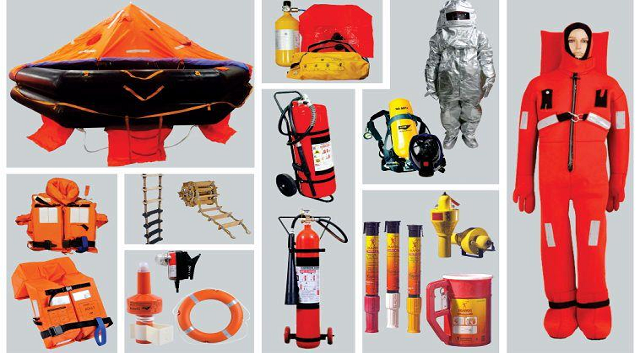1) Protective Clothing: Protective clothing is a coverall which protects the body of the crew member from hazardous substance like hot oil, water, welding sparks etc. It is popularly known as “dangri “or “boiler suit”.
2) Helmet: The most important part of the human body is the head. It needs utmost protection which is provided by a hard plastic helmet on the ship. A chin strap is also provided with the helmet which keeps the helmet in place when there is a trip or fall.
3) Safety Shoes: Maximum of the internal space of the ship is utilized by cargo and machinery, which is made of hard metal and which makes it clumsy for the crew to walk around. Safety shoes ensure that nothing happens to the crew member’s feet while working or walking onboard.
4) Safety Hand gloves: Different types of hand gloves are provided onboard the ship. All these are used in operations wherein it becomes imperative to protect one's hands. Some of the gloves provided are heat-resistant gloves to work on hot surfaces, cotton gloves for normal operation, welding gloves, chemical gloves etc.
5) Goggles: The eyes are the most sensitive part of the human body and in daily operations on ship chances are very high for having an eye injury. Protective glass or goggles are used for eye protection, whereas welding goggles are used for welding operation which protects the eyes from high-intensity sparks.
6) Ear Muff/plug: The engine room of the ship produces 110-120 dB of sound which is very high for human ears. Even a few minutes of exposure can lead to headache, irritation and sometimes partial or full hearing loss. An ear muff or ear plug is used on board the ship which dampens the noise to a bearable decibel value.
7) Safety harness: Routine ship operation includes maintenance and painting of high and elevated surfaces which require crew members to reach areas that are not easily accessible. To avoid a fall from such a heightened area, a safety harness is used. The safety harness is donned by the operator at one end and tied at a strong point on the other end.
8) Face mask: Working on insulation surfaces, painting or carbon cleaning involves minor hazardous particles which are harmful to the human body if inhaled directly. To avoid this, face masks are provided which act as a shield from hazardous particles.
9) Chemical suit: The use of chemicals onboard ships is very frequent and some chemicals are very dangerous when they come in direct contact with human skin. A chemical suit is worn to avoid such situations.
10) Welding shield: Welding is a very common operation onboard ship for structural repairs. A welder is provided with a welding shield or mask which protects the eyes from coming in direct contact with ultraviolet rays of the spark of the weld.

